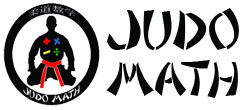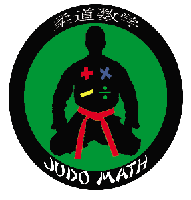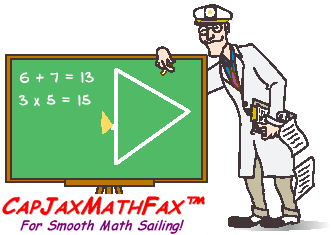How Does Project-Based Learning Work?
Project-based learning, as with all lessons, requires much preparation and planning. It begins with an idea and an essential question. When you are designing the project and the essential question that will launch the activities, it is important to remember that many content standards will be addressed. With these standards in mind, devise a plan that will integrate as many subjects as possible into the project. Have in mind what materials and resources will be accessible to the students. Next, students will need assistance in managing their time — a definite life skill. Finally, have multiple means for assessing your students’ completion of the project: Did the students master the content? Were they able to apply their new knowledge and skills? Many educators involve their students in developing these rubrics. Teacher Eeva Reeder developed and implemented an architecture project for her geometry students. Here are steps for implementing PBL, which are detailed below: Start with the Essential Question Design a Plan for the Project Create a Schedule Monitor the Students and the Progress of the Project Assess the Outcome Evaluate the Experience Start with the Essential Question The question that will launch a PBL lesson must be one that will engage your students. It is greater than the task at hand. It is open ended. It will pose a problem or a situation they can tackle, knowing that there is no one answer or solution. “Questions may be the most powerful technology we have ever created. Questions and questioning allow us to make sense of a confusing world. They are the tools that lead to insight and understanding.”-JAMIE MCKENZIE, THE QUESTION MARK Take a real-world topic and begin an in-depth investigation. Base your question on an authentic situation or topic. What is happening in your classroom? In your community? Select a question about an issue students will believe that, by answering, they are having an impact on. Make it relevant for them. The question should be a “now” question — a question that has meaning in your students’ lives. Among many other wonderful resources for understanding PBL, theBuck Institute for Education (BIE) offers a great tutorial on how to“Craft the Driving Question.” BIE consultant Andrew Miller recently wrote two blog posts for Edutopia.org, How to Write Effective Driving Questions for Project-Based Learning and How to Refine Driving Questions for Effective Project-Based Learning. Edutopia.org PBL blogger Suzie Boss describes a variety of project kickoff ideas in How to Get Projects Off to a Good Start. Design a Plan for the Project When designing the project, it is essential that you have in mind which content standards will be addressed. Involve the students in planning; they will feel ownership of the project when they are actively involved in decision making. Select activities that support the question and utilize the curriculum, thus fueling the process. Integrate as many subjects as possible into…
Read More »Questions Before Answers: What Drives a Great Lesson?
via Edutopia Recently, I was looking through my bookshelves and discovered an entire shelf of instruction books that came with software I had previously purchased. Yes, there was a time when software was bought in stores, not downloaded. Upon closer examination of these instruction books, I noticed that many of them were for computers and software that I no longer use or even own. More importantly, most were still in shrink-wrap, never opened. I recalled that when I bought software, I just put the disk into the computer and never looked at the book. I realized that I did the same when I bought a new car — with one exception. I never read the instruction book in the glove compartment. I just turned on the engine and drove off. I already knew how to drive, so I didn’t need a book. The exception occurred when I tried to set the clock. I couldn’t figure it out, so I finally opened the glove compartment and checked the book. This pattern was and is true for every device I buy. I never read the book that comes with a toaster, an iPod, or a juicer unless I have a question. There are some people who do read instruction books before using a device, but with no disrespect intended, those people are a small minority. Our minds are set up to not care about answers unless we have a question. The greater the question, the more compelling it is, the more we want the answer. We learn best when questions come before answers. The Need to Know Too many classrooms ignore this basic learning model. They spend most of class time providing information and then ask questions in the form of a quiz, test, or discussion. This is backward. Too many students never learn this way. It is simply too hard to understand, organize, interpret, or make sense out of information — or even to care about it — unless it answers a question that students care about. Lessons, units, and topics are more motivating when they begin with a question whose answer students want to know. Not only do great questions generate interest, they also answer the question that so many students wonder about: “Why do I have to learn this?” Finally, great questions increase cognitive organization of the content by framing it into a meaningful answer to the opening question. There is a catch, though, in using questions to begin your lesson. The question must be connected to the content, so that the following learning activities actually answer the question. The question must fit your students’ age, ability, and experiences. In addition, the question needs to provoke both thought and curiosity. In fact, it must be compelling enough to generate so much motivation so that students can’t help but want to know the answer. Have you ever forgotten the…
Read More »Common Core in Action: Math in the Middle School Classroom
Aligning instruction to meet the Common Core State Standards is the new norm for educators across most of the United States. In the middle school math classroom, technology can be used to help students reach mastery of these Common Core skills. Let’s take a look at a sixth grade geometry standard and how, using technology, teachers can promote engagement through student-centered exploration of this skill. CCSS.Math.Content.6.G.A.3 Draw polygons in the coordinate plane given coordinates for the vertices; use coordinates to find the length of a side joining points with the same first coordinate or the same second coordinate. Apply these techniques in the context of solving real-world and mathematical problems. Using Technology to Instruct When it comes to hooking students and grabbing their attention at the beginning of a lesson, video tutorials can be powerful. Instead of giving a lecture to teach new material, the instructor can field questions and facilitate a discussion after students watch a concise tutorial on a particular topic. Khan Academy is one fantastic resource to find free, high-quality video tutorials on a variety of subject areas. To reach this particular standard, Khan Academy has a section devoted to Perimeter, Area and Volume that can support students at different entry points. Using an interactive whiteboard is another way teachers can integrate technology into their lesson. This type of tool is perfect for modeling how to plot points on a coordinate grid to create a shape. In Notebook on the SMARTBoard for example, teachers can change their background to graph paper to create coordinate planes with a quick search in the gallery section. Using Technology to Explore If you’re using an interactive whiteboard to model drawing polygons on a coordinate grid to determine the length of each side, try having individual students come to the front of the room to draw out problems for the class. When students are working at tables or with partners to solve problems, have a small group work on the interactive whiteboard as opposed to their desks. There are apps available from the iTunes Store that help students draw on a coordinate grid. This is great for teachers who have access to iPads in a one-to-one environment, who want to create stations with just a few iPads, or who can assign a group of four or five students to a single iPad. Geometry Pad is a fantastic, free iPad app that students can use to draw polygons on a coordinate plane. They can even explain their work in writing by adding text to screen. Using Technology to Assess Solving real-world problems is an important aspect of Common Core math. What better way for students to demonstrate their understanding than through the creation of the same type of tutorials you showed your class to kick off the lesson? Here are some ideas: Students can create screencasts using a free iPad app like…
Read More »Finding Equity is Math Assessment
I close my eyes, take a deep breath, and shout, “Go!” It sounds like I am standing in the middle of FedEx Field and the Washington Redskins just won the Super Bowl. But it’s not cheering I am hearing—it is students helping students. It may be the sweetest thing I have ever heard. I look to my left and I hear a student say, “Tell me the steps you went through to solve that.” I walk to my right and I hear, “Are you sure that’s what the next step is?” I keep walking around and I keep hearing students challenging each other, playing devil’s advocate in math. I think this is actually working! I remember when a college professor of mine said something that would change the way I think about everything around me. He quoted Thomas Jefferson by saying, “’There is nothing more unequal than the equal treatment of unequal people.’ An unfortunate practice that still occurs in classrooms today.” The fine line between equitable teaching and fair teaching is danced upon daily. Treating everyone equally while leveling the playing field is a challenge all teachers face. It may sound like you are doing the right thing if you are giving every student the same options, opportunities, or advantages. But is that what they all need? To me, teachers who teach the same thing to everyone and the same way to everyone are creating a learning environment that is not conducive to every student in the room. To teach equitably, one must look to the needs of each individual student. Our goal as educators should be to veer from an equal learning experience toward an equitable learning experience. Our job is to make sure all students have a fair, and possibly unequal, learning experience. Ensuring that each student has a fair opportunity to succeed means that one student’s path may look very different from another’s. I have been restructuring my assessment practices in class lately because I tend to see the same students failing repeatedly. I came to the conclusion that maybe it isn’t them, but that my assessments aren’t up to par with what they need. When I started asking some of the students why they believed they got the grade they did, I got some interesting responses: “I thought the quiz was on something else.” “I didn’t have room to write my answers.” “I don’t remember covering that material.” “I couldn’t memorize all the steps.” “I didn’t get some of the questions.” None of these responses were positive in nature. I began to wonder: How might I change students’ perceptions of assessment and raise their confidence in the classroom? Recently, I have been focusing on how to assess students in math, particularly students with an Individualized Education Plan (IEP), while maintaining equity in the classroom. In the past, I have modified the actual test in…
Read More »Why Is It So Hard to Change How We Teach Math?
Educators have been talking about changing the traditional way of teaching math for a long time, but nothing seems to change. Elizabeth Green’s New York Times Magazine article digs into why it has been so hard for U.S schools to effectively implement changes to math pedagogy, and just how far American students have fallen behind as a result. A lot of it comes down to ensuring teachers are comfortable with the new methods, she writes: “In fact, efforts to introduce a better way of teaching math stretch back to the 1800s. The story is the same every time: a big, excited push, followed by mass confusion and then a return to conventional practices. The trouble always starts when teachers are told to put innovative ideas into practice without much guidance on how to do it. In the hands of unprepared teachers, the reforms turn to nonsense, perplexing students more than helping…
Read More »Repetition Doesn’t Work: Better Ways to Train Your Memory
via The Daily Beast A team of scientists recently discovered that repetition is a terrible way to memorize information—and their findings highlight much better strategies. A new study published in Learning and Memory found that simple repetition interferes with the ability to learn new information, especially when it is similar to a set of familiar facts. This may mean that memorizing facts about an issue through repetition could interfere with the ability to remember a more nuanced version of the same issue later on. “Our findings suggest that although the ability to generally recognize something is strengthened with multiple encounters, one’s ability to discriminate among similar items in memory decay,” the study says. “In contrast to past beliefs, repetition may reduce the fidelity of memory representations.” In study, subjects said a list of objects either one or three times. Later on, in the recall phase, another set of similar objects (“lures”) was snuck in. Those who had seen objects multiple times better recalled the original objects but had a harder time distinguishing the lures. In other words, their memories were stronger but less precise. Over the long run, repetition can be a false temptress, making us think we’ve learning something when we really haven’t. “On your first reading of something, you extract a lot of understanding. But when you do the second reading, you read with a sense of ‘I know this, I know this,’”explain psychologists Henry Roediger and Mark McDaniel, authors of Make it Stick. “So basically, you’re not processing it deeply, or picking more out of it. Often, the re-reading is cursory—and it’s insidious, because this gives you the illusion that you know the material very well, when in fact there are gaps.” Here are a few tips for better memory: Pace your studying Not all repetition is bad. It’s more accurate to say that cramming is ineffective. “The better idea is to space repetition. Practice a little bit one day, then put your flashcards away, then take them out the next day, then two days later,” explain McDaniel and Roediger. Repetition can be a false temptress, making us think we’ve learning something when we really haven’t. Mentally testing yourself on materials generally increases recall days later, even if there’s no feedback on how well you actually remember the facts. In other words, just going over the material in your head at regular intervals has benefits. Within academia, there’s a raging debate about the optimal spacing between recall intervals [PDF]. One of the original systems, by foreign language learning icon Paul Pimsleur, advocated for a pacing of five seconds, 25 seconds, two minutes, 10 minutes, one hour, five hours, one day, five days, 25 days, four months, and two years after the facts are initially learned. Since then, others have found that a slight delay of 10 minutes in the first retrieval made the task just mentally…
Read More »



 Judo Math motivates all students to take responsibility. There are no ability groups, just pacing groups. By the end of each discipline, everyone is a black belt rank, reinforcing the unity of the class.
Judo Math motivates all students to take responsibility. There are no ability groups, just pacing groups. By the end of each discipline, everyone is a black belt rank, reinforcing the unity of the class.  www.capjax.com
www.capjax.com